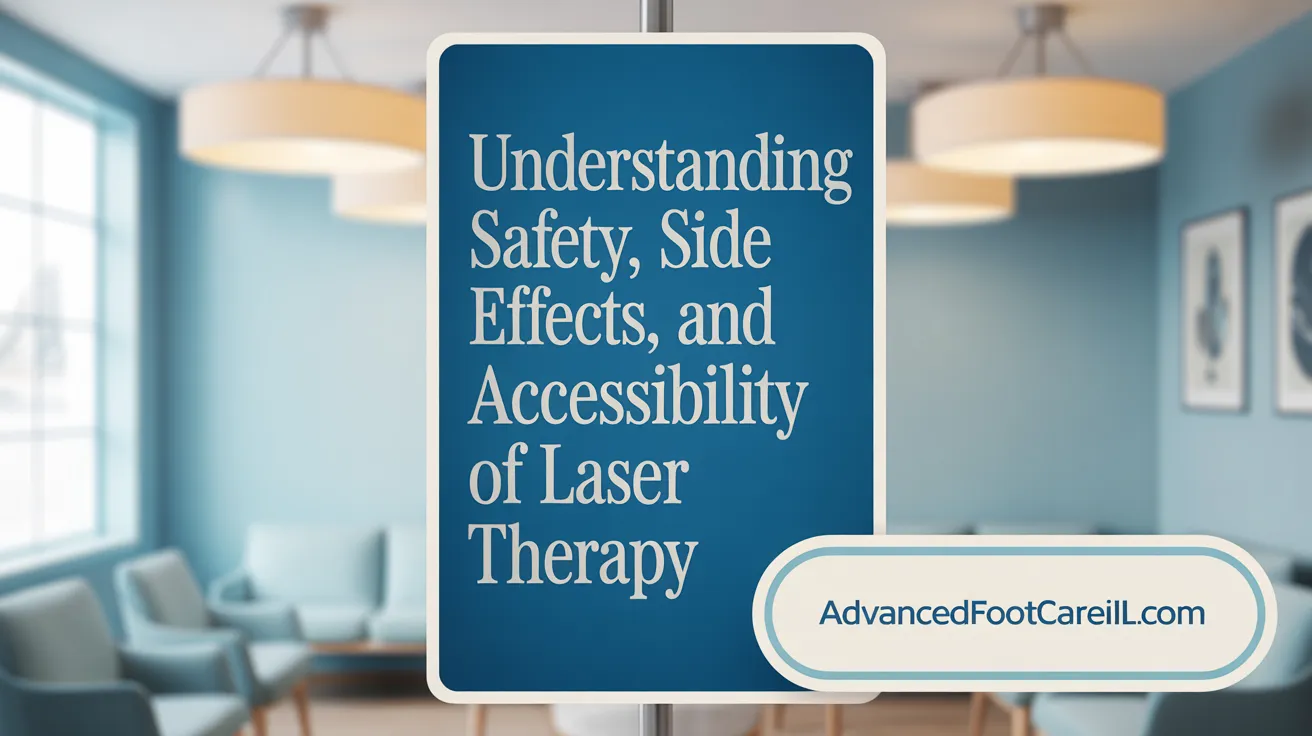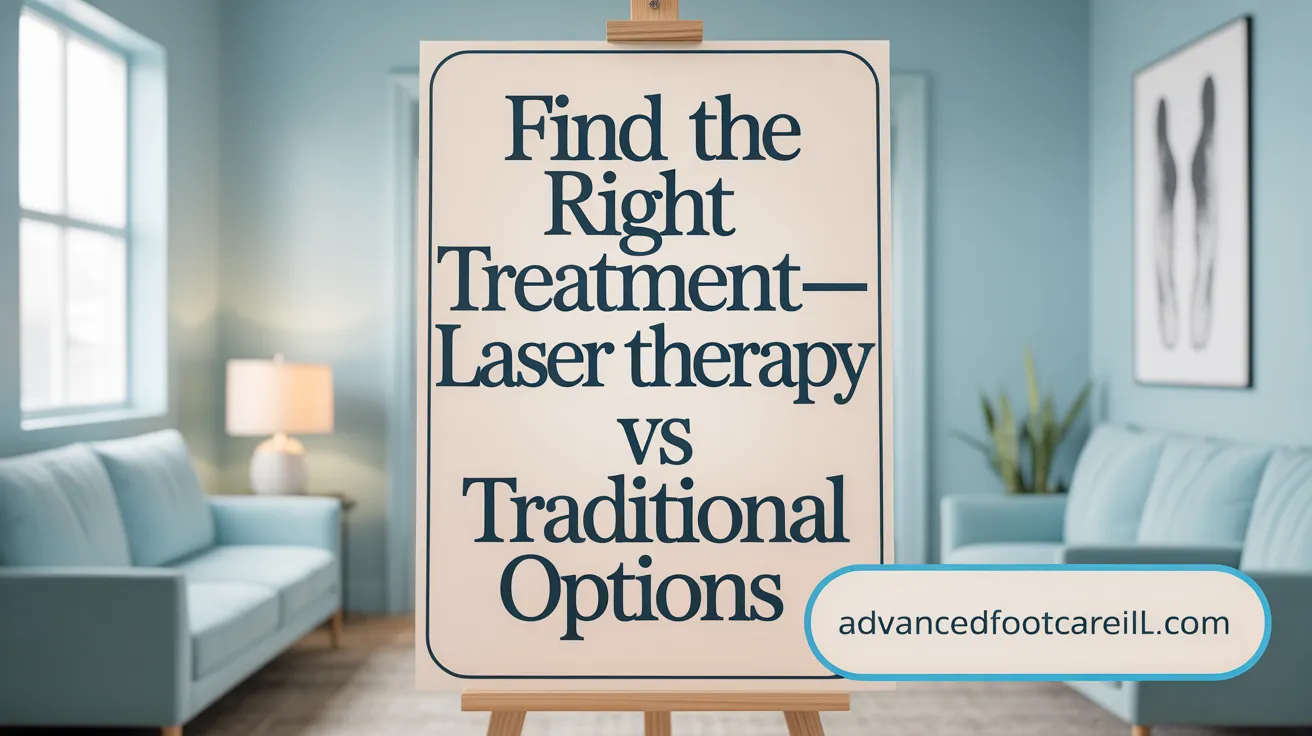Understanding Nail Fungus and Its Treatment Landscape
Definition and Common Symptoms of Nail Fungus
Nail fungus, medically known as onychomycosis, is a widespread infection affecting the toenails and fingernails. It is caused primarily by dermatophytes, yeasts, or molds that thrive on keratin, the protein making up nails. Common symptoms include discoloration (yellowish, white, or dark spots), thickening, brittleness, roughness, and sometimes deformation of the nails. Infected nails may exhibit an unpleasant odor and can become painful or separated from the nail bed in severe cases.
Traditional Treatment Methods Overview
Typical treatments for nail fungus include topical antifungal creams and medicated nail polishes that require prolonged use, often daily for several months. Oral antifungal medications, such as terbinafine and itraconazole, offer higher cure rates but involve longer treatment durations and potential side effects including liver toxicity. In some cases, surgical interventions like nail removal may be necessary for persistent or severe infections. Home remedies and natural products like tea tree oil, Vicks VapoRub, and ozonized oils have been explored but generally provide limited and slower improvements.
Introduction to Laser Therapy as a Treatment Option
Laser therapy has emerged as a modern, non-invasive alternative for managing nail fungus. This technique uses focused laser light to penetrate the nail plate and directly target fungal cells with heat, destroying them while sparing surrounding healthy tissue. Treatments are typically quick, painless, and require minimal to no recovery time. Clinical studies report success rates ranging from 60% to over 90%, often outperforming traditional topical therapies and sometimes rivaling oral medications. Laser therapy is usually performed in-office in multiple sessions and is suited for patients seeking a safer, drug-free treatment with fewer side effects.
How Laser Therapy Works Compared to Traditional Treatments

How Does Laser Therapy Treat Nail Fungus Compared to Traditional Treatments?
Laser therapy combats nail fungus by directing specific wavelengths used in laser therapy for onychomycosis of light through the infected nail, heating and destroying fungal cells while sparing surrounding healthy tissue. This targeted approach kills the fungus directly without invasive procedures. Multiple sessions, commonly lasting around 30 minutes each, are often needed to achieve optimal results (laser therapy effectiveness for nail fungus, laser treatment session duration).
In contrast, traditional treatments rely on either topical antifungal medications or oral systemic drugs. Topical treatments require daily applications for extended durations, often up to a year, and face challenges penetrating the thickened nail, resulting in lower cure rates and slow progress (Topical antifungal treatments, Medicated nail polish for fungus). Oral antifungals, such as terbinafine or itraconazole, act systemically over 6 to 12 weeks to encourage the growth of fungus-free nails but carry risks such as liver toxicity and gastrointestinal side effects (Oral antifungal drugs, Terbinafine cure rates).
Differences in Treatment Length, Comfort, and Recovery
Laser therapy sessions are swift, typically between 15 to 45 minutes, and usually necessitate two or more treatments spaced 5 to 6 weeks apart (laser treatment session protocols for nail fungus, 45 minute laser therapy). Patients experience minimal to no discomfort during the procedure, with no anesthesia required, and there is no recovery time—normal activities can be resumed immediately (no anesthesia laser procedure, no recovery time after laser treatment).
Traditional topical treatments demand consistent daily use for several months, which may impact patient adherence due to inconvenience and prolonged time before visible improvements occur (effectiveness of topical treatments, duration of oral antifungal treatment. Oral antifungal medications, though more effective than topicals, may induce systemic side effects requiring medical supervision, potentially compromising patient comfort and safety (side effects of oral antifungals, oral antifungal limitations).
Overall, laser therapy offers a less invasive, more comfortable, and faster recovery alternative to traditional fungal nail treatments, with a favorable safety profile and reduced side effect risks (Pros of laser therapy, Safety of laser treatment.
Effectiveness and Success Rates: Laser Therapy vs Traditional Methods

How effective is laser therapy compared to traditional topical and oral treatments?
Laser therapy for toenail fungus has demonstrated notably higher clinical success rates than traditional topical treatments. Studies report laser treatment success rates ranging from 60% up to 90% following multiple sessions. This contrasts with topical antifungal medications, which typically show much lower cure rates around 7% to 17%. Oral antifungal drugs such as terbinafine and itraconazole generally have cure rates between 50% and 81%, making laser therapy at least comparable and often superior in efficacy. For more on traditional toenail fungus treatments, see the comprehensive overview.
What factors influence treatment efficacy?
The effectiveness of laser therapy can vary based on several factors including the severity and type of the fungal infection, the particular fungal species involved, and individual patient responses. Severe infections or those involving certain fungi may require additional sessions or combination therapies with topical agents. Patient adherence to foot hygiene and post-treatment care also plays a significant role in sustained outcomes.
What about recurrence and reinfection rates?
Recurrence and reinfection remain challenges in managing onychomycosis regardless of the treatment modality. Laser therapy when used alongside proper nail and foot care and preventive measures, may help reduce reinfection by effectively eliminating fungal cells without systemic side effects. However, recurrence rates can range broadly, often between 6.5% to 53%, highlighting the need for ongoing monitoring and preventive strategies.
When can patients expect visible improvements and nail regrowth?
Following laser treatment, patients generally notice visible improvements in nail appearance within 2 to 6 months. Complete regrowth of healthy nails usually occurs over the course of 9 to 18 months, depending on whether fingernails or toenails are treated. Fingernails tend to regrow faster (3 to 6 months) compared to toenails (12 to 18 months). The gradual growth reflects the natural nail regeneration process after fungal clearance.
| Treatment Type | Success Rate Range | Typical Treatment Duration | Notes on Regrowth and Recurrence |
|---|---|---|---|
| Laser Therapy | 60% - 90% | Multiple sessions, ~30 min each | Visible improvement in 2-6 months; regrowth 9-18 months; reduced recurrence when combined with hygiene |
| Oral Antifungals | 50% - 81% | 6-12 weeks course | Longer systemic treatment; risk of side effects |
| Topical Treatments | 7% - 17% | Daily for up to 1 year | Less effective for severe cases; slow visible results |
Laser therapy offers a rapid, safe, and effective alternative, outperforming traditional topical therapies and rivaling oral medications, particularly valuable for patients seeking quicker results without systemic risks. For additional details on benefits and safety of laser treatment, please refer to the linked resource.
Safety, Side Effects, and Accessibility Considerations

What are the safety and side effect differences between laser and traditional treatments?
Laser therapy for toenail fungus is widely regarded as a safe and painless option. Unlike oral antifungal medications, which can cause systemic side effects such as liver toxicity and gastrointestinal issues, laser treatments avoid such risks because they do not involve drugs. Patients typically experience minimal side effects; some may notice temporary redness or mild swelling around the treated nail but no significant discomfort or need for anesthesia. Topical antifungal treatments, while generally safe, can sometimes irritate the skin around the nails.
How safe is laser therapy for patients with underlying health conditions?
Laser therapy’s non-invasive and drug-free nature makes it suitable for a broad range of patients, including those with comorbidities such as diabetes or immune system compromises. Although those with complex health issues should always consult their healthcare provider before treatment, laser therapy poses fewer systemic risks than oral medications, making it a favorable alternative where medication contraindications exist.
What are the pain levels and anesthesia requirements?
The laser procedure is typically painless, with most patients reporting only a mild warming sensation during treatment. Local anesthesia is usually unnecessary, contributing to a quick and comfortable treatment experience.
How do insurance coverage and cost affect laser therapy accessibility?
One limitation for many patients is that laser therapy for toenail fungus is often considered a cosmetic procedure and thus not covered by most health insurance plans. Treatment costs vary but can range from approximately $495 to $1,500 depending on the clinic and the number of sessions required. Patients may use health savings accounts or flexible spending accounts to offset expenses. This financial barrier can restrict access for some individuals.
What about availability and access to laser therapy?
Laser treatment requires specialized equipment and trained podiatrists, meaning it is only available in select clinics. Geographic location and clinic resources can limit patient access. However, for those who can access it, the treatment offers a convenient, outpatient option with minimal downtime, allowing immediate return to normal activities. See more on availability of laser toenail fungus removal.
In summary, laser therapy offers a safer side effect profile and greater convenience compared to traditional oral and topical treatments. However, higher costs, limited insurance coverage, and restricted availability remain important considerations when evaluating treatment options.
Advantages and Limitations: Evaluating Which Treatment Fits Best

What are the advantages and limitations of laser therapy compared to traditional treatments?
Laser therapy offers several significant benefits for treating toenail fungus. It is a non-invasive, painless procedure requiring no anesthesia, and allows patients to resume normal activities immediately after treatment (no recovery time). The therapy specifically targets fungal cells with heat, sparing healthy tissue and resulting in fewer systemic side effects than oral medications such as liver toxicity or gastrointestinal issues (how laser therapy works. It typically provides faster visible improvement, often within a few months (nail regrowth timeline and reports success rates ranging from 60% to over 90% depending on the protocol and severity of infection (success rates of laser treatment. Additionally, laser treatment minimizes the need for prolonged daily applications required by topical treatments and avoids some risks associated with surgery (pros and cons of laser therapy).
However, laser therapy has limitations. The cost is higher and often not covered by insurance since it may be classified as cosmetic (insurance and laser treatment. Multiple sessions spaced weeks apart are generally needed for optimal results (multiple laser sessions. Access to treatment requires specialized clinics with trained professionals, which can limit availability (availability of laser toenail fungus removal. Moreover, efficacy can vary depending on fungal type, infection severity, and patient factors (effectiveness of laser treatment). Recurrence remains possible even after laser treatment (recurrence after laser therapy.
Traditional treatments, including oral antifungals (like terbinafine and itraconazole) and topical medications (such as ciclopirox, efinaconazole), tend to be more affordable and widely available with insurance coverage (oral antifungal therapy for onychomycosis. Oral drugs have higher cure rates than topicals but carry risks of systemic side effects and need medical supervision (side effects of oral antifungals). Topical treatments are safe but generally less effective and require months to a year of consistent use (topical antifungal treatments. Patient adherence can be challenging due to treatment length and regimen complexity (treatment challenges in older adults.
Surgical options, such as nail removal, are usually reserved for severe, resistant infections causing significant pain or deformity, given their invasiveness and possible complications (surgical nail removal options. Natural remedies, including tea tree oil or Vicks VapoRub, are sometimes used adjunctively but lack robust clinical evidence for reliably curing infections (home remedies for toenail fungus).
Selecting the appropriate treatment involves evaluating the infection's severity, patient health, risk factors, lifestyle, and preferences (considerations in treatment selection. Patient adherence and consistent foot hygiene are crucial factors influencing successful outcomes across all therapy types (foot hygiene tips).
Making Informed Choices: Laser Therapy and Traditional Treatment Options
Comparative Benefits and Drawbacks
Laser therapy for toenail fungus offers a non-invasive, quick, and painless alternative with success rates up to 80-90%. It targets fungal cells precisely, sparing healthy tissue, and typically requires less recovery time. However, it is often costlier and may require multiple sessions. Traditional treatments, including oral antifungals and topical agents, have longer treatment durations, possible side effects like liver toxicity, and lower efficacy rates especially with topical alone.
Importance of Individualized Treatment Plans
Choosing the best approach depends on infection severity, patient health, and fungal type. Older adults or those with underlying conditions may benefit from laser therapy due to fewer systemic risks, while mild infections might respond well to topical or home treatments. Providers assess clinical and mycological factors to tailor therapy.
Role of Patient Preference and Health Status
Patient comfort, affordability, and treatment convenience influence decision-making. Laser therapy suits those seeking faster, minimally discomforting options without systemic drug effects. Conversely, patients with insurance coverage or budget constraints might opt for traditional therapies.
Future Perspectives in Toenail Fungus Management
Innovations like combined laser and topical regimens, emerging plasma therapies, and improved natural antifungals show promise. Enhanced diagnostics and personalized protocols aim to maximize cure rates, reduce recurrences, and optimize overall foot health in the evolving podiatric field.
